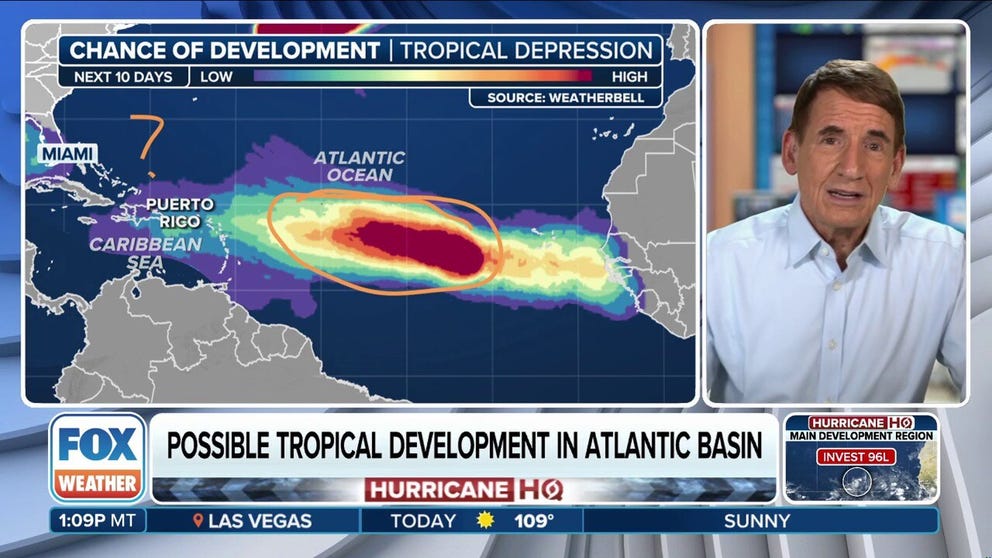Weather slowly improving along Mexican coastline but rip current threat remains
PUERTO VALLARTA, Mexico – Tropical Storm Ivo is steadily pulling away from Mexico’s Pacific coastline after dumping heavy rainfall and generating rough surf south of the Baja California Peninsula, but some threats will remain as the system only slowly heads west to northwest.
Overall, Ivo is considered to be a small cyclone, with tropical-storm-force winds only extending outward some 40 miles, but it is expected to strengthen through the end of the week.
Forecasters say conditions may allow Ivo to briefly reach minimal hurricane status, but a stout ridge of high pressure over northern Mexico and the southwestern United States will keep the system on a westward track, steering it away from land.

(FOX Weather)
SHIPWRECKS DATING BACK TO 1700S UNCOVERED ALONG NORTH CAROLINA SHORELINE
Still, hazards from the storm are not entirely over, as elevated ocean swells and strong rip currents will likely linger.
The combination of Ivo and waves produced by Tropical Storm Henriette, which is closer to Hawaii, will lead to enhanced currents along the Mexican coastline.
Rip currents form when waves break near the shoreline, pile up water, and form a narrow stream that flows quickly away from shore, catching swimmers off guard.
These hidden dangers are annually the number one weather-related killer in some coastal communities, including Florida.
As long as cyclones such as Ivo, Henriette, and even future Juliette and Kiko remain active off the coast of Mexico, seas have the potential to be more energized than is typical, leading to additional threats.

East Pacific Storm Names in 2025
(FOX Weather)
While some beaches, particularly near resorts, are staffed with lifeguards, much of the coastline remains unmonitored.
Some may utilize a flag system warning of surf conditions, with green indicating conditions are safe for swimming, and red and black indicating dangerous conditions.
Many beaches in the Sunshine State also employ the use of a flag system, which runs from green to double red and even purple when marine life such as jellyfish or sharks are present.

This graphic provides information on beach flags and rip currents.
(FOX Weather)
PHOTO GALLERY: THE WORST 25 HURRICANES OVER THE LAST 25 YEARS
Forecasters encourage those visiting coastal areas along the Pacific to remain weather-aware and heed local notices before venturing into the ocean.
The eastern Pacific hurricane season officially runs from May 15 through November 30, with tropical cyclone activity typically peaking during the late summer and early fall.
Source link
editor's pick
latest video
Sports News To You
Subscribe to receive daily sports scores, hot takes, and breaking news!





